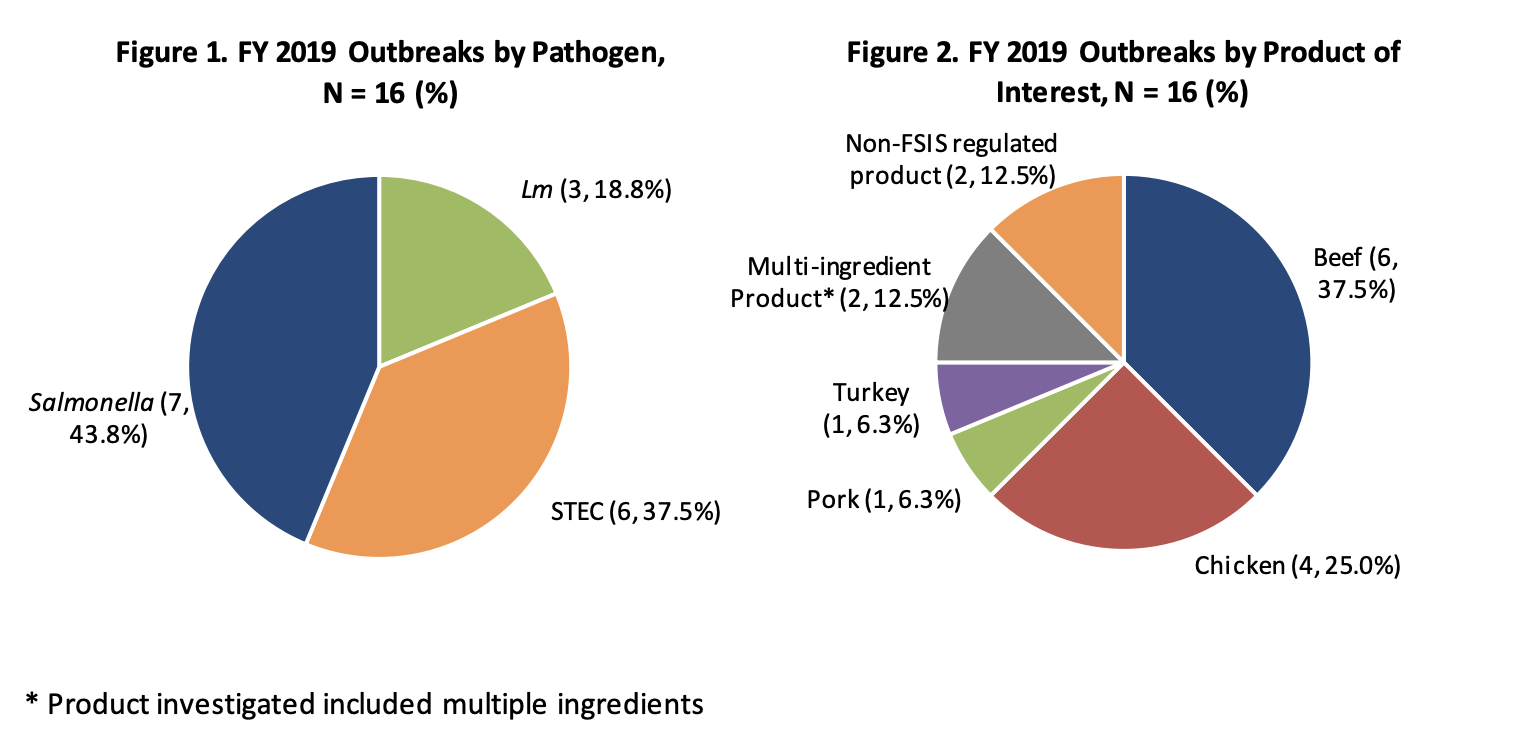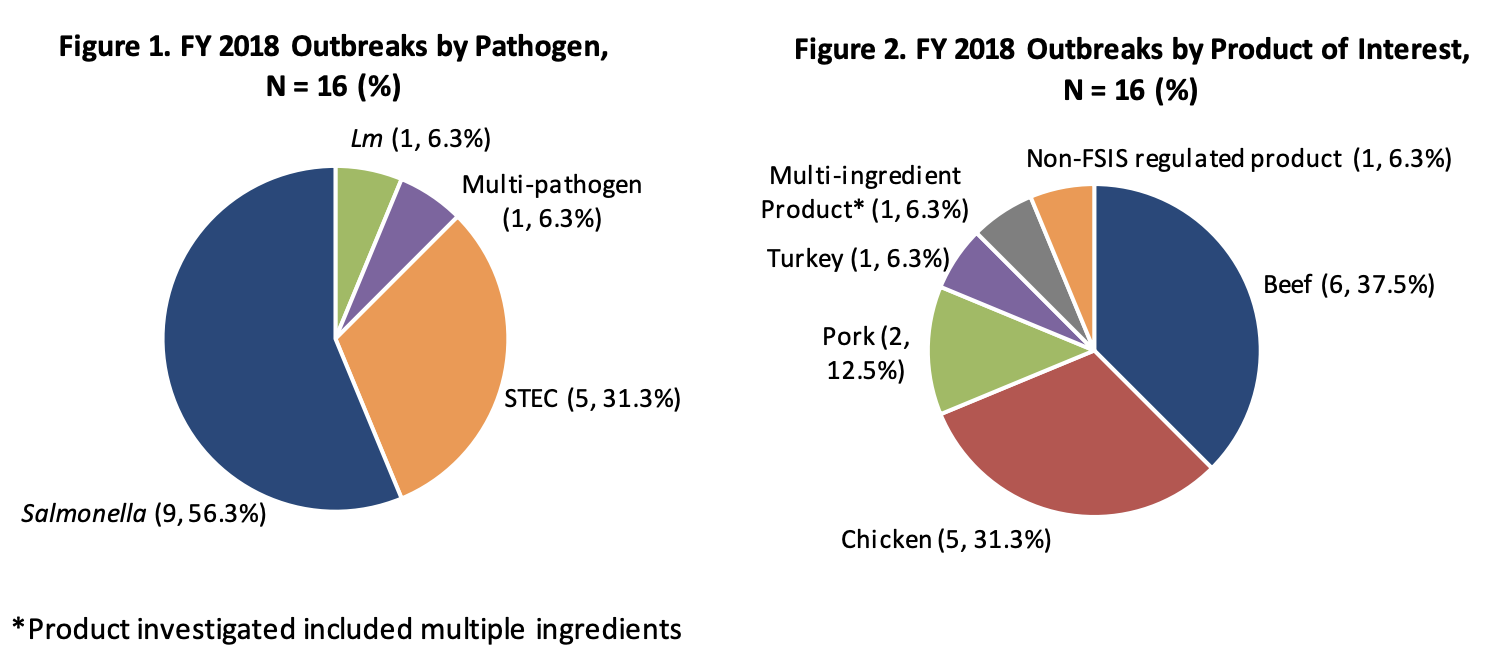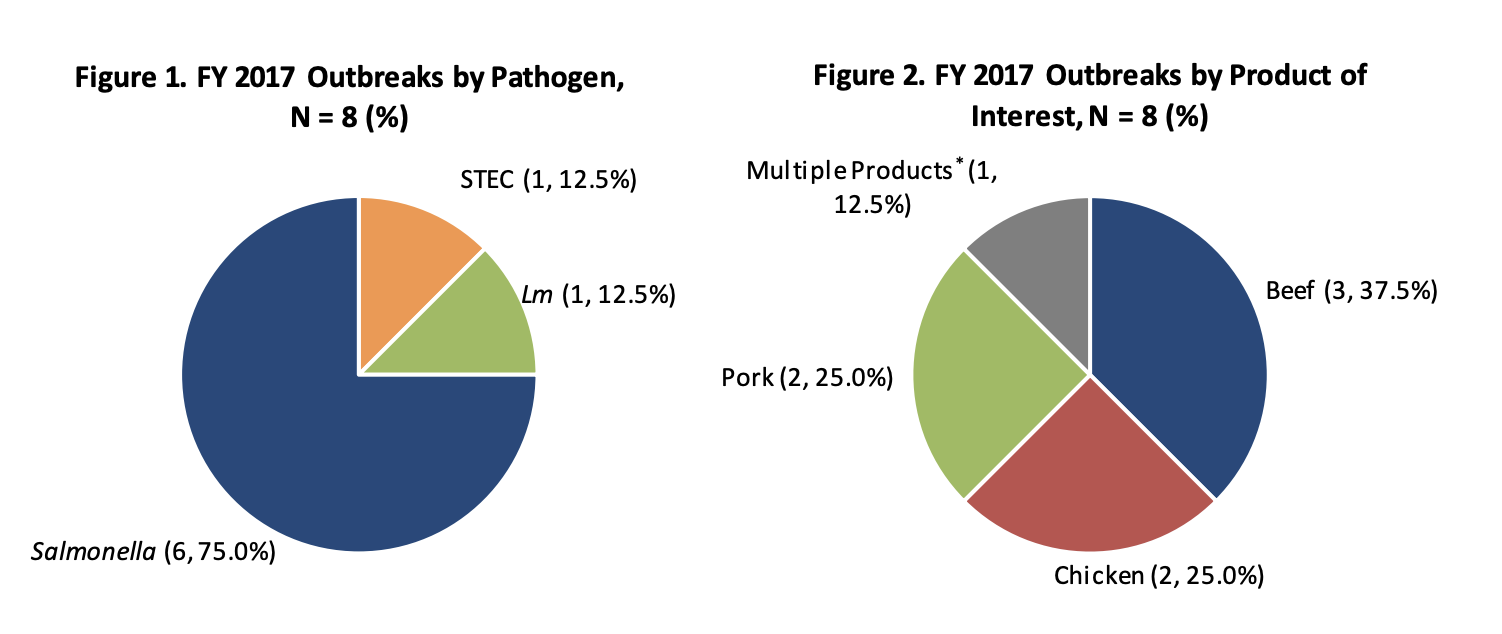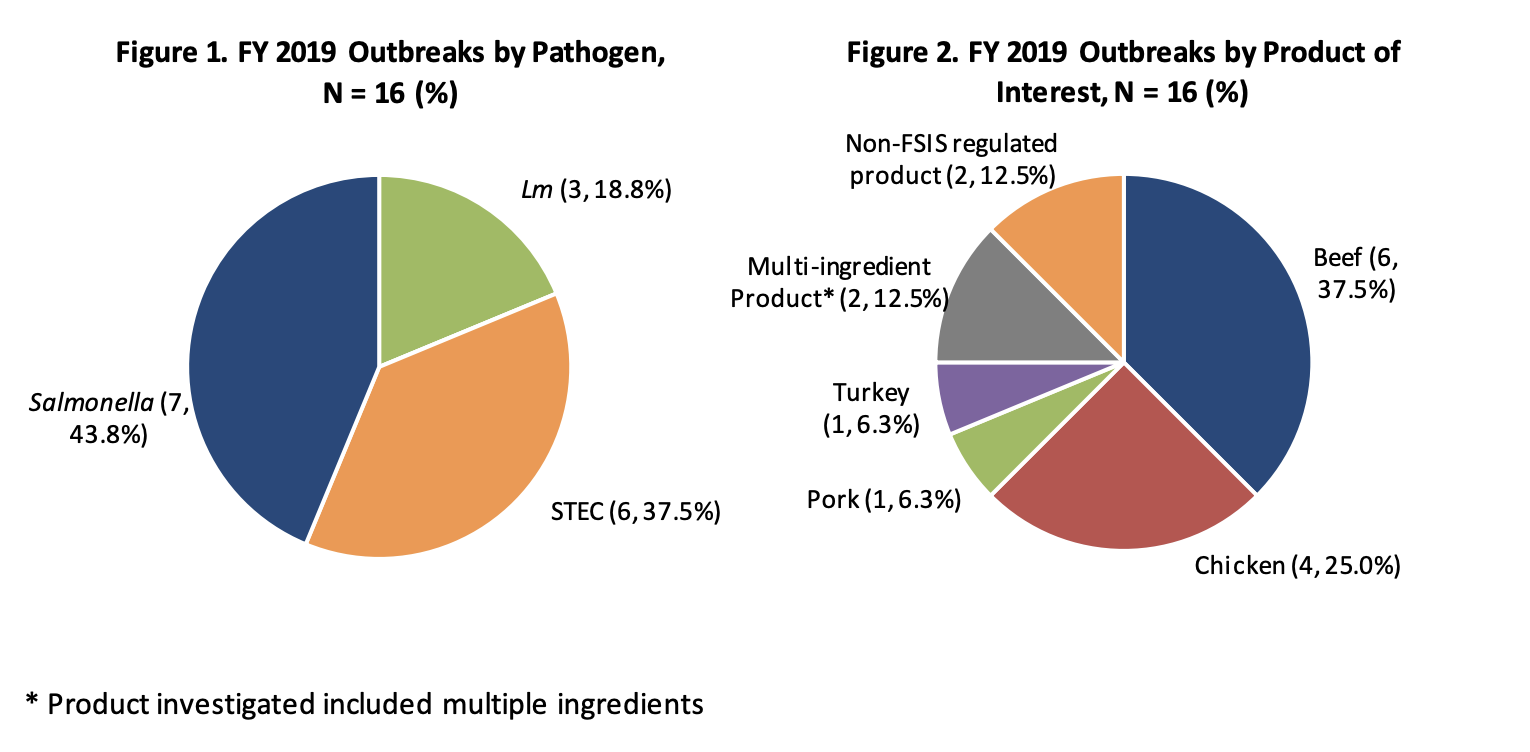| Markets | United States of America |
| Organization | SGS Digicomply editorial team |
| Topic | Alerts and Recalls |
FSIS has posted on its website an outbreak investigations overview and summaries of outbreaks investigated during fiscal years (FY) 2017, 2018, and 2019. The overview provides information about how FSIS is notified about outbreaks, the types of information FSIS evaluates to help inform Agency actions, and how FSIS captures and applies outbreak lessons learned. The annual outbreak reports summarize information about outbreaks investigated during each FY, including the number of outbreaks, pathogens, products, illnesses, and how many outbreaks resulted in a product recall. The annual reports also highlight lessons learned from outbreak after-action reviews.
Summary for 2019
During FY 2019, the FSIS investigated 16 outbreaks in coordination with local, state, and federal public health agencies that involved about 1,000 illnesses and more than 175 hospitalizations.
The Centers for Disease Control and Prevention notified the FSIS about 11 of the outbreaks, for 68.8 percent. Fifteen, or 93.8 percent, of the outbreaks involved illnesses in more than one state.
Of the 16 outbreaks investigated by the FSIS in FY 2019, Salmonella was responsible for 7, or 43.8 percent. It was the most common pathogen, followed by STEC with 6 outbreaks, 37.5 percent, and Listeria monocytogenes with 3, 18.8 percent.
Beef was involved in 6 outbreaks, or 37.5 percent, while chicken was involved in 4, or 25.0 percent. They were the most common food products of interest. Serotypes involved in the FY 2019 Salmonella outbreaks included Blockley, Enteritidis, Newport, Rissen, and Schwarzengrund.
The STEC outbreaks were caused by one or more of the following serogroups: O157: H7, O26, O103, and O121.
Three, of 18.8 percent, of outbreaks led to a product recall. The FSIS requests that establishments recall products associated with an outbreak.

Summary for 2018
During FY 2018, the FSIS investigated 16 outbreaks in coordination with local, state, and federal public health agencies. The outbreaks involved about 1,400 illnesses and more than 400 hospitalizations.
State public health partners notified the FSIS most often — in 9 out of the 16 outbreaks for 56.3 percent. Ten, or 62.5 percent, of outbreaks involved illnesses in more than one state.
Of the 16 outbreaks investigated by the FSIS in FY 2018, Salmonella, at nine outbreaks for 56.3 percent, was the most common pathogen, followed by STEC (5 outbreaks or 31.3 percent), Clostridium and Salmonella ( one each, or 6.3 percent), and Listeria monocytogenes (1, or 6.3 percent).
Beef with 6 outbreaks was responsible for 37.5 percent, followed by chicken with 5 outbreaks for 31.3 percent. They were the most common food products of interest.
Serotypes involved in the FY 2018 Salmonella outbreaks included Newport, I 4,[5],12: I :-, Reading, Typhimurium, Infantis, Blockley, and Enteritidis.
The STEC outbreaks were caused by one or more of the following serogroups: O157: H7 and O26.
Six, or 37.5 percent of outbreaks led to a product recall. The FSIS requested that establishments recall products associated with outbreaks.

Summary for 2017
During FY 2017, the FSIS investigated eight outbreaks in coordination with local, state, and federal public health agencies. The outbreaks involved about 300 illnesses and more than 100 hospitalizations.
The Centers for Disease Control and Prevention informed the FSIS about six of these outbreaks. Six of the outbreaks involved illnesses in more than one state.
Of the eight outbreaks investigated by the FSIS in FY 2017, Salmonella was the most common pathogen, followed by STEC and Listeria monocytogenes.
Serotypes involved in the FY 2017 Salmonella outbreaks included Enteritidis, Newport, and I 4,[5],12:i:-. Among the six Salmonella outbreaks, beef, chicken, and pork products were associated with illnesses.
Because of the lack of information for the six Salmonella outbreaks, the FSIS could not take further action on a product or recommend actions for consumers or industry.
There were two additional out Six, or 37.5 percent of outbreaks led to a product recall. breaks investigated during FY 2017, one each caused by STEC and Listeria monocytogenes.


